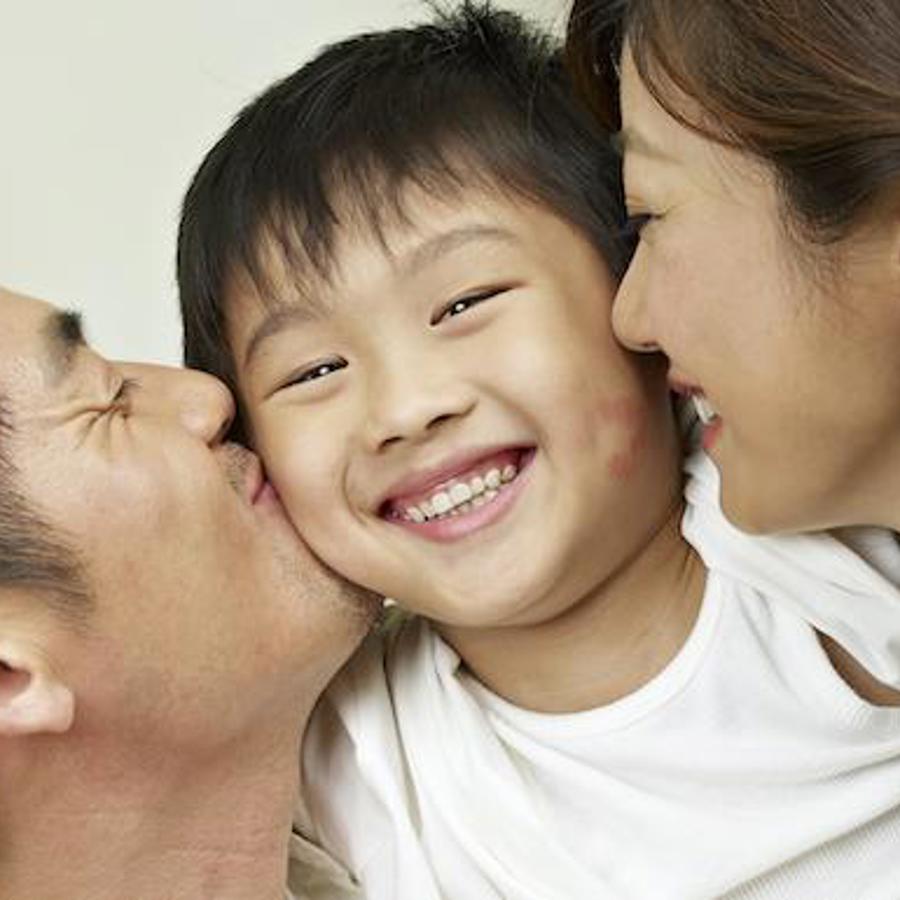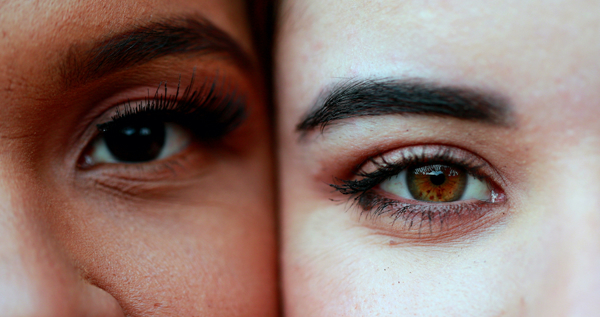
Are children genetically closer to their father than their mother?
November 1, 2005

- Related Topics:
- Relatedness,
- Genetic myths
A curious adult from New Jersey asks:
"I am a Chinese American woman. In the Chinese culture, people typically favor the male species. For example, they prefer sons over daughters and think two brothers are genetically closer to each other than two sisters. Also, they truly believe that the children are genetically closer to the father than the mother. Is this really true? I am often in debates with my parents and relatives about this. I don't believe their theory is true. I believe I am just as close to my father as to my mother. Please help me solve this mystery."
Your instinct is right-on: children are equally related to both parents. You are just as related to your mother as your father. And your sister is as related to you as you are to your brother.
How related we are to someone is determined by how much of their DNA we share. This has very little to do with gender -- the 70 or so genes on the Y chromosome* don't do much but make someone a fertile male!
In other words, the 0.2% of genes the Y represents just isn't that important in how related we are to our parents. What is more important is that we get half of our DNA from mom and half from dad. This really tells us how related we are to each of our parents.
DNA contains all of the instructions for making you. And most of these instructions come in the form of genes.
Genes lay the foundation for who we are. They control obvious things like eye and hair color. But they also allow our hearts to beat, our brains to think and our lungs to breathe.
Of course, genes aren't everything. They really are just a starting point. Who we are is also influenced by the air we breathe, the food we eat, the food your mother ate while she was pregnant with you, and lots of other things. But the basic framework for how related we are to each other is determined by genes.

Chromosomes and Meiosis
So how do we get half from each parent? We get two copies of each gene, encoded on 46 pieces of DNA called chromosomes (23 from one parent, 23 from the other).
Embryos are made when a sperm cell fuses with an egg cell. Unlike most of the cells in our body, sperm and egg cells have only half of the amount of DNA as usual (23 chromosomes instead of 46). Because they only have half the number of chromosomes, when the egg and sperm fuse, the resulting embryo has the normal number of chromosomes (23 + 23 = 46).
If we get equal amounts of DNA from each parent, why aren't we just a blend of both? How is it that a person can look more like one parent than the other?
The answer to these questions has to do with the fact that the two copies of each gene you get from your parents aren't necessarily identical. There can be different versions, or alleles, of the same gene. It's the combination of the two alleles of the gene you inherit that decides what you look like.
Sometimes the two versions sort of blend with each other. One example of this is eye color.
One of the genes for eye color comes in two forms -- brown and blue. If both of your alleles are brown, you are more likely to have brown eyes, and if both are blue, you are more likely to end up with blue eyes. What happens if you have a brown and a blue version? You may end up with green or hazel eyes.

Dominant and Recessive Genes
Lots of genes aren't like this, though. For these other genes, one form wins out over the other. The winner is called the dominant version. The version that loses out is called the recessive version.
Let's give a concrete example to help explain all of this. The gene that gives people red hair comes in two alleles. The dominant version gives you dark hair. The recessive version gives you red hair.
You end up with dark hair if either or both copies of the gene are the dark hair version. The only way to get red hair is if both copies are that allele -- one red allele is not enough to give you red hair.
Imagine that mom has black hair and dad has red. We know dad's genes right away -- since red hair is recessive, he must have two copies of the recessive allele. Mom is a little trickier to figure out.
Since dark hair is dominant, she has two possible combinations of genes. She can have either two dark hair alleles or one dark and one red hair allele. So who would the child most look like in this case? It depends on mom, not dad.
Dad will always give a red hair gene -- that is all he has to offer. If mom has two copies of the dark hair version, then all of her sons and daughters will have dark hair just like her.
If she has one of each gene, then half the time the child will have dark hair and the other half they will have red hair. And it won't matter whether the child is a boy or a girl.
And we do this kind of thing for all 20,000 or 25,000 genes. For some of the genes, mom and dad will have the same alleles and so you'll look like both of them. For some, dad will have the dominant gene and so you may be more likely to look like him. Other times it'll be the reverse. And for others, it'll be a blending of the two alleles.
It is important to note that even if you look more like one parent than the other, the amount of genetic relatedness is the same. But none of these has to do with the gender--the vast majority of genes don't care about the sex of the child.
So yes, you are just as related to your mom as your dad. Gender has very little to do with it at the DNA level.
*Remember, males usually have an X and a Y chromosome and females usually have two X chromosomes.
Author: Natasha Miley
When this answer was published in 2005, Natasha was a Ph.D. candidate in the Department of Developmental Biology, studying chromosome pairing in C. elegans meiosis in Anne Villeneuve’s laboratory. Natasha wrote this answer while participating in the Stanford at The Tech program.
 Skip Navigation
Skip Navigation
